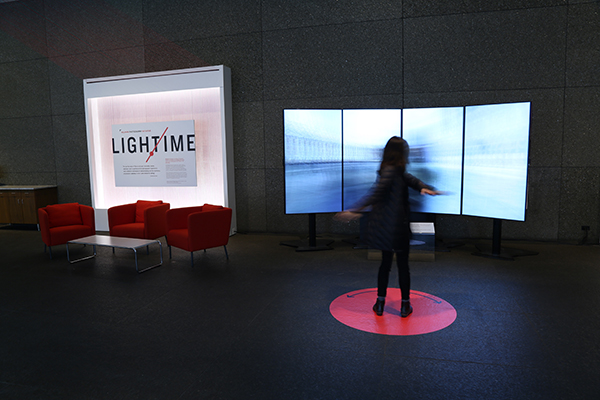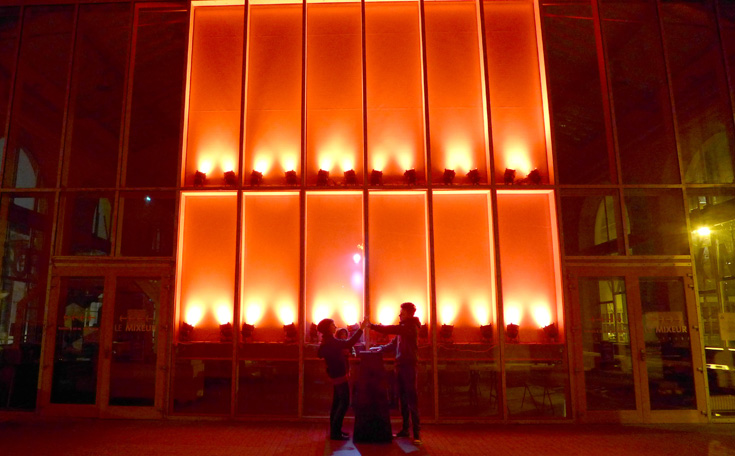Caroline Record is an artist and software developer with a strong background in the fields of fine arts, user-centered design, and programming. Her project, Light Clock, was installed at the Carnegie Museum of Art. Every five minutes, the camera within the clock captures a 360-degree view of the museum plaza. It does this 24/7. These images are then sent inside to an exhibit in the museum lobby, allowing visitors to spin to control their point of view of the photographs.

Record’s exhibit allows visitors to experience the perspective of another time, from another point of view. It can be interesting to see how the view outside is compounded by experiencing the same view inside.
Caroline Record has had fellowships in the past with Carnegie Mellon University, the Brewhouse Association, and Yale University Norfolk. She has had exhibitions at the Carnegie Science Center, Space Gallery, Miller Gallery, and the Brewhouse Association. She now works as part of the innovation team at the Carnegie Museum of Art. I admire her work because her pieces seem to be about turning mundane things into something that inspires curiosity and wonder. In other projects, Section of Mystery, and She, Record makes use of simply a door and text messages. I appreciate the art of her creating worlds within the world we live in.
![[OLD FALL 2019] 15-104 • Introduction to Computing for Creative Practice](../../wp-content/uploads/2020/08/stop-banner.png)


